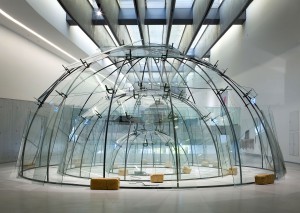opening hours
Monday closed
Tuesday to Sunday 11 am – 7 pm
Sunday 24 December 11 am > 4 pm
Monday 25 December closed
Tuesday 31 December 11 am > 4 pm
Wednesday 1 January 11 am > 7 pm
Monday 6 January 11 am > 8 pm
- full price € 15 at the box office - € 14 online
- reduced price € 12 at the box office - € 11 online
for young people aged between 18 and 25 (not yet turned 25); for groups of 15 people or more; La Galleria Nazionale, Museo Ebraico di Roma ticket holders; upon presentation of ID card or badge: Accademia Costume & Moda, Accademia Fotografica, Biblioteche di Roma, Centro Sperimentale di Cinematografia, Enel (for badge holder and accompanying person), FAI – Fondo Ambiente Italiano, Feltrinelli, Gruppo FS, IN/ARCH – Istituto Nazionale di Architettura, Sapienza Università di Roma, LAZIOcrea, Palazzo delle Esposizioni, Amici di Palazzo Strozzi, Accademia Nazionale di Santa Cecilia, Scuola Internazionale di Comics, Teatro Olimpico, Teatro dell’Opera di Roma, Teatro di Roma, Università degli Studi di Roma Tor Vergata, Youthcard; upon presenting at the ticket office a Frecciarossa or a Frecciargento ticket to Rome purchased between 27 November 2024 and 20 April 2025
- open € 18
valid for one year from the date of purchase
- free
minors under 18 years of age; disabled people requiring companion; EU Disability Card holders and accompanying person; MiC employees; myMAXXI cardholders; registered journalists with a valid ID card; European Union tour guides and tour guides, licensed (ref. Circular n.20/2016 DG-Museums); 1 teacher for every 10 students; AMACI members; CIMAM – International Committee for Museums and Collections of Modern Art members; ICOM members; journalists (who can prove their business activity); European Union students and university researchers in art history and architecture, public fine arts academies (AFAM registered) students and Temple University Rome Campus students from Tuesday to Friday (excluding holidays); IED – Istituto Europeo di Design professors, NABA – Nuova Accademia di Belle Arti professors, RUFA – Rome University of Fine Arts professors; upon presentation of ID card or badge: Collezione Peggy Guggenheim a Venezia, Castello di Rivoli Museo d’Arte Contemporanea, Sotheby’s Preferred, MEP – Maison Européenne de la Photographie; on your birthday presenting an identity document
Collection
MAXXI’s Collection of Art and Architecture represents the founding element of the museum and defines its identity. Since October 2015, it has been on display with different arrangements of works.





























14 April – 15 July 2012 extended until 16 September
Kaarina Kaikkonen, one of Finland’s leading artists, is known internationally for her environmental projects and for her large-scale installations realised with simple materials such as clothing or paper that reference the great Scandinavian tradition in which the relationship between art and environment is one of the most successful examples of 20th Century research.
The materials she will use in the site-specific installation conceived for MAXXI are children’s clothes of various colours and types that will be collected as part of a major educational project among the families of the area. In this way, every person who donates a garment, with all its baggage of memory associated with children’s clothes, will ideally form part of the work. Like a great sail, the work will move with the wind, connecting one of the voids that characterise MAXXI’s external profile and modifying Zaha Hadid’s building. The pastel colours and the softness of the children’s clothes will establish a dialogue with and test the hardness of the concrete tracing the lines of the museum.
On the occasion of the presentation of the work, on Saturday 14th of April, a great party is being organized in the MAXXI piazza that will see families involved in a workshop in which the artist will share her project with the public.
The work realised for MAXXI is part of a project that has involved the realisation of a large site-specific installation by the artist, Are We Still Going On?, conceived for the former Max Mara clothing factory, now the home of the Collezione Maramotti (Reggio Emilia, 26 February – 28 October 2012) and which follows and accompanies the compositional structure of the building.
Supported by